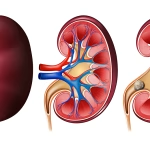Clinical trials form the cornerstone of evidence-based medicine. They provide the data needed to determine whether new treatments are safe and effective for patients. One of the most complex challenges in trial design and conduct is determining the right balance of safety monitoring. While risk assessment and monitoring are critical to protect participants and ensure data integrity, excessive or poorly targeted monitoring can create unintended challenges. It is not enough to meet regulatory and ethics committee expectations on paper; the true measure of success is whether safety monitoring strategies deliver meaningful protection without introducing unnecessary burden, inefficiency or delays.
Drawing on collective experience from a range of clinical trial models—including traditional, real-world, and decentralized studies—this article explores the importance of risk assessment and safety monitoring, the dangers of imbalance, and key considerations for achieving the right level of oversight in today’s increasingly complex research environment.
The Role and Risks of Safety Monitoring in Clinical Trials
At its core, risk assessment aims to identify potential safety concerns before and during a trial. Preclinical studies provide early insights into possible toxicities such as organ damage or immune reactions. These findings guide human trial design, shaping dose selection, eligibility criteria and monitoring schedules. Once a trial begins, safety monitoring is the primary tool for detecting adverse events and protecting participants. This includes laboratory tests, vital signs, clinical observations and adverse event reporting. Independent Data Monitoring Committees (DMCs) often review unblinded data to recommend any necessary changes to safeguard participants and trial integrity.
However, safety monitoring exists on a continuum. At one extreme, under-monitoring risks failing to identify early signs of harm. At the other, over-monitoring may result in unnecessary data collection, false safety signals, increased costs, and trial inefficiencies. Literature highlights these risks: oncology trials burdened by excessive reporting have led to “alert fatigue,” where critical signals are buried among low-priority warnings. Similarly, rigid statistical stopping boundaries have in some cases halted trials prematurely, despite the absence of real safety concerns (Martens & Logan, 2024). These examples emphasize the importance of proportional, focused monitoring.
Achieving smart safety monitoring is not only essential for participant protection and data integrity; it is also critical for meeting regulatory expectations while controlling costs and timelines. Right-sized monitoring ensures that compliance is achieved without diverting resources unnecessarily or creating procedural burdens that slow recruitment, extend trial duration, or inflate budgets. Proportional monitoring helps align scientific, ethical, and operational priorities in a way that supports timely, efficient trial delivery.
Modern trials increasingly adopt decentralized and hybrid models. These designs, accelerated by the COVID-19 pandemic, rely on telemedicine, home-based procedures, and digital tools, reducing in-person interactions. While they improve accessibility and convenience, they reduce direct observation by investigators, complicating safety monitoring. The balance becomes more delicate: excessive oversight can undermine the benefits of decentralization, while insufficient monitoring risks missing subtle safety signals. Technologies like wearables, remote labs, and e-diaries support safety monitoring in these models but generate large volumes of data. Without clear thresholds and action plans, this data flood can create noise rather than clarity. Furthermore, these trials present a unique ethical challenge (Vayena, E. et al., 2023).
Achieving this balance is supported not only by making participation convenient but also by involving patients at the planning stage—seeking their input in trial design, consent processes, and study procedures to align with their needs and treatment expectations. Various regulatory authorities have published guidelines to support these decentralized trial principles (Sinha et al., 2024).
Smart safety monitoring in clinical trials is both an art and a science. The goal is not only to satisfy regulatory requirements but to design systems that genuinely protect participants, support scientific discovery, and enable efficient, reliable trials.
Excessive or overly complex monitoring procedures can also slow down recruitment, as participants may be deterred by frequent visits, invasive tests, or demanding reporting requirements. This can be particularly problematic in large-scale or global trials where logistical barriers already exist. Over-monitoring can strain site staff and resources, increasing the risk of delays, protocol deviations, or lower data quality. In contrast, well-designed, proportionate monitoring supports trial feasibility by focusing effort where it adds the most value, enabling both participant protection and smooth trial delivery.
Designing Smart Monitoring Strategies
Smart monitoring requires thoughtful, flexible planning tailored to the product, population, and trial design. Key principles include:
- Risk-proportionate planning: Monitoring intensity should reflect the product’s risk. For example, trials of cytotoxic cancer therapies require more frequent lab tests than studies of well-characterized chronic medications.
- Adaptability: Plans should allow for adjustment as new data emerge—for instance, adding targeted checks if unexpected safety signals arise, or scaling back when risks are shown to be minimal.
- Judicious technology use: Digital tools should focus on collecting actionable data, such as triggering alerts only for clinically significant events rather than minor, non-relevant fluctuations.
- Independent oversight: Complex or higher-risk trials benefit from DMCs or similar bodies that provide objective reviews of emerging safety data and guide necessary trial adjustments.
- Critical thinking culture: Safety monitoring should emphasize meaningful signals over administrative formality, focusing on events with real clinical relevance rather than generating unnecessary reports of minor, expected findings.
Safety monitoring also provides opportunities for discovery. Unexpected adverse events can uncover new biological pathways or mechanisms of action, as seen when cardiovascular risks identified during diabetes trials advanced understanding of metabolic health. This dual role—as both protective tool and source of insight—underscores the value of monitoring that prioritizes quality over quantity.
Smart safety monitoring in clinical trials is both an art and a science. The goal is not only to satisfy regulatory requirements but to design systems that genuinely protect participants, support scientific discovery, and enable efficient, reliable trials. Proportional safety monitoring helps achieve compliance while supporting cost control and timely trial completion. Literature examples remind us that excessive caution, whether through over-monitoring or rigid statistical thresholds, can be as problematic as insufficient oversight. As trials grow more complex and adopt new models, achieving the right balance will remain a key challenge for sponsors, investigators, and regulators. Through proportional design, continuous reassessment, and a focus on meaningful data, we can ensure safety monitoring serves its purpose—protecting participants while advancing science.

By Alina Panourgia
PV and Regulatory Compliance Advisor
References:
Martens, M. J. & Logan, B. R. (2024). Statistical rules for safety monitoring in clinical trials. Clinical Trials, 21 (2), 152–161.
Sinha, S.D., Sriramadasu, S. C., Raphael, R. & Roy, S. (2024). Decentralisation in clinical trials and patient centricity: benefits and challenges. Therapeutic Innovation & Regulatory Science, 38,109-120.
Vayena, E., Blasimme, A. & Sugarman, J. (2023). Decentralised clinical trials: ethical opportunities and challenges. Health Policy, 5(6), E390–E394.




















